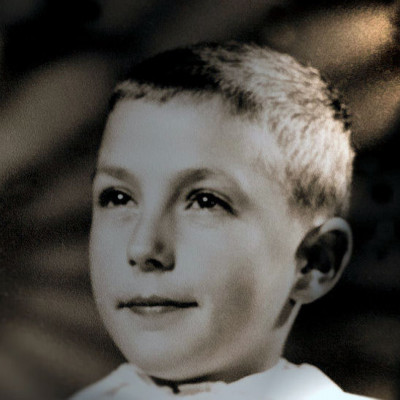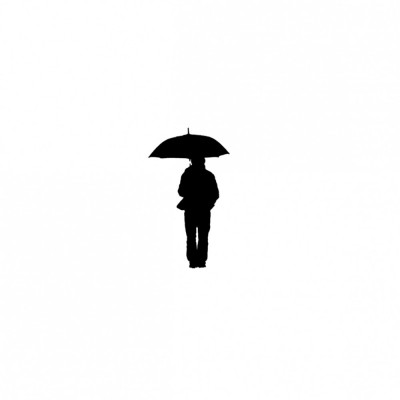SEARCH






|
|
|
|


by Editor Yvette Depaepe
Lightning is the most spectacular element of a thunderstorm. In fact it is how thunderstorms got their name. But what does thunder have to do with lightning? Well, lightning causes thunder.
From the clouds to a nearby tree or roof, a lightning bolt takes only a few thousands of a second to split through the air. The loud thunder that follows the lightning bolt is commonly said to come from the bolt itself. However, the grumbles and growls we hear in thunderstorms actually come from the rapid expansion of the air surrounding the lightning bolt.
Images from 1x Photographers
Music by 1x Photographer and Composer Martin Zalba
Lightning is one of the hardest photographic subjects to shoot successfully. It's great fun but you need a fair bit of luck to capture a well exposed, well composed scene filled with interesting lightning bolts.
The key to getting good shots is to be well prepared and get the camera's settings just right. After that it's a case of being patient and taking enough photos to give yourself a good chance that one or two will hit the mark.
This is very simple, even though many people at first don't understand how anyone can be so fast in triggering the shutter release after seeing lightning. The trick is, you don't do that, because you will photograph lightning during the night (indeed daytime lightning photography is quite a challenge). You make use of the B shutter speed mode, which will leave the camera shutter open as long as you want, and you wait for lightning to occur in the frame.
I discovered so many marvelous lightning shots in the 1x gallery. It was very hard to make a selection. Here are the images in the order included in the video.
Don't skip the end of this article where you will find some tips and tricks to shoot lightnings at night as well as during the day time.
Enjoy and get inspired to go out and shoot impressive bolts during the next thunderstorm.
Shooting lightnings at night
Many of these tips/settings can be used with a point-and-shoot camera with manual settings.
Camera: Whatever camera your shooting with these days.
Lenses: Wide to mid focal-length zoom lenses
Tripod: This is a must…no use trying if you don’t have one. If your tripod isn’t heavy duty, hang a weight from it to prevent a spill. Storms are usually accompanied by wind, and you don’t want your set-up toppling over or camera shake while the shutter is open. e the weight to sway and generate unwanted movement of the tripod.
Remote trigger: Having a remote to trigger the shutter, or a cable release, makes the process much easier and is recommended.
Camera Settings
Manual Mode: Shoot in manual mode and in RAW format if you have the capabilities to process them. Otherwise JPEG will suffice.
Shutter speed: Try to shoot 8-15 second long exposures, but even go up to 20-30 second exposures – catching lightning is all about experimentation, and finding the settings that work best for the effect you want to achieve in your given conditions. 8-15 seconds allows you to preserve some of the cloud details at an acceptable sharpness as well as let in enough light to preserve foreground details. Obviously, in darker and rural areas, longer shutter speeds will be needed if there is any hope of capturing foreground detail.
Bulb Mode: A lot of people use bulb mode to capture lightning strikes for longer than 30 seconds to get a proper exposure for the landscape. Tricky because if you wait too long for a bolt to strike the image may be over exposed. Conversely, if a bolt strikes a second or two into your exposure, you may close the shutter too early and you could be left with an underexposed image.
It all comes down to consistency and repeatability. Using the exact same shutter speed (until conditions change) for a set of shots will yield consistent results that will allow you to more easily edit the images in post-processing, and will allow you to more easily create panoramas or even stacked lighting composites.
Aperture: Shoot between f/10-f/16 is OK, but sometimes you can open up to f/4 or less (for less intense in-cloud lightning), or you can close it down to f/12+ if the bolts are really bright and close. Again, experimentation is the key.
ISO: Keep it low – usually under 200. Long exposures inherently add noise so go for the least amount of noise possible.
Focus: Manually set your focus to infinity. This is probably the most important part of capturing bolts because it will allow your shutter to release instantly every time without having to re-focus. If you’re using a point-and-shoot, you should be able to choose an infinity focus setting in your camera’s focus menu.
Shooting lightnings during the day time
Perhaps you’ve begun to master photographing lightning at night, but you’ve noticed that there are tons of great storms during the day that produce some pretty great lightning strikes, too. How do you transfer your knowledge over and capture some of those images to add to your collection?
Find a Safe Vantage Point
This one should go without saying, but if you're going to be strapping your gear onto a metal tripod and standing outside in stormy weather for an extended period of time, you should be safe while doing so. You can try being further away from the storm, which will actually give you a better view of any strikes, or you can shoot from a sheltered area. You can even photograph from inside your car if needed.
Use a tripod
When shooting lightning, you’ll be shooting long exposures and shooting handheld simply isn’t an option that will produce a quality image.
Close Down your aperture and Drop your ISO
Both of these techniques will allow you to shoot a longer shutter speed during the day without blowing out your image. You don't want to close down to the smallest aperture as you may lose some of your image quality. Say your lens goes from f/2.8 - f/22 - try shooting around f/11 or f/14. Depending on your camera, you can probably safely drop your ISO without degrading image quality.
Use a Neutral Density Filter if Needed
If your aperture and ISO combination still isn't allowing you to shoot long enough for each frame, you can add a neutral density filter to the front of your lens, effectively removing stops from the exposure, depending on what level filter you're using.
Capturing lightning strikes can be a challenge, but can be incredibly rewarding.
Once you dial your settings in, you can also try using a remote and setting the camera to shoot continuously. Then you can sit back and see what you capture over the course of the storm.
 | Write |
 | Miro Susta CREW Fabulous photographs. I am really jealous. Well done Yvette and all photo contributors. |
 | Yvette Depaepe CREW Thanks, dear Miro! Don't be jealous ;-) Just go out and try it. It's triggering and so exciting! |
 | Thierry Dufour PRO Just fantastic, thanks !!! |
 | Yvette Depaepe CREW Thank you, Thierry! |
 | Christine von Diepenbroek PRO Wonderful pictures! Thanks a lot. |
 | Yvette Depaepe CREW Thanks, Christine! All honour goes to the authors! |
 | Mozart Chan Thank you! Amazing video and photos. Capturing lightning here in my city is a big thing among landscape photographers too. usually they would either use timelapse mode or use lightning trigger, that would make the task easier. |
 | Yvette Depaepe CREW Thanks for your fine feedback, Mozart Chan! Always interesting to have advice from photographers used to shoot lightnings. Also thanks for your appreciation, my friend. Cheers, Yvette |
 | Olga Merrill Wonderful ( photos, article, music ) . Thank you ! |
 | Yvette Depaepe CREW Thank you, dear Olga! It was interesting to discover the great shots from 1x members. Cheers, Yvette |
 | Lucyna Łazarska ( Lucynda Lu ) Amazing pictures:) |
 | Yvette Depaepe CREW Yes they are, Lucynda! Thanks for your appreciation ;-) |
 | Massimo Della Latta Fantastic |
 | Yvette Depaepe CREW Thank you, Massimo! All honor goes to the authors of these gorgeous shots... Cheers, Yvette |
 | Gilbert Claes PRO Just great... Music and images... Congrats to Martin and all the photographers with this splendid work... and of course Yvette. Warm regards to all of you... Gil
|
 | Yvette Depaepe CREW Thanks a lot, Gil! Best greetings, Yvette |
 | Martin Zalba Dear Yvette, thank you very much for including my music and some of my photos in this great video. Great images of great photographers, an honor for me! |
 | Yvette Depaepe CREW My pleasure, Martin! Such a delight to be able to put some of your wonderful music on this video. Have a great and beautiful weekend, my precious friend!!! |